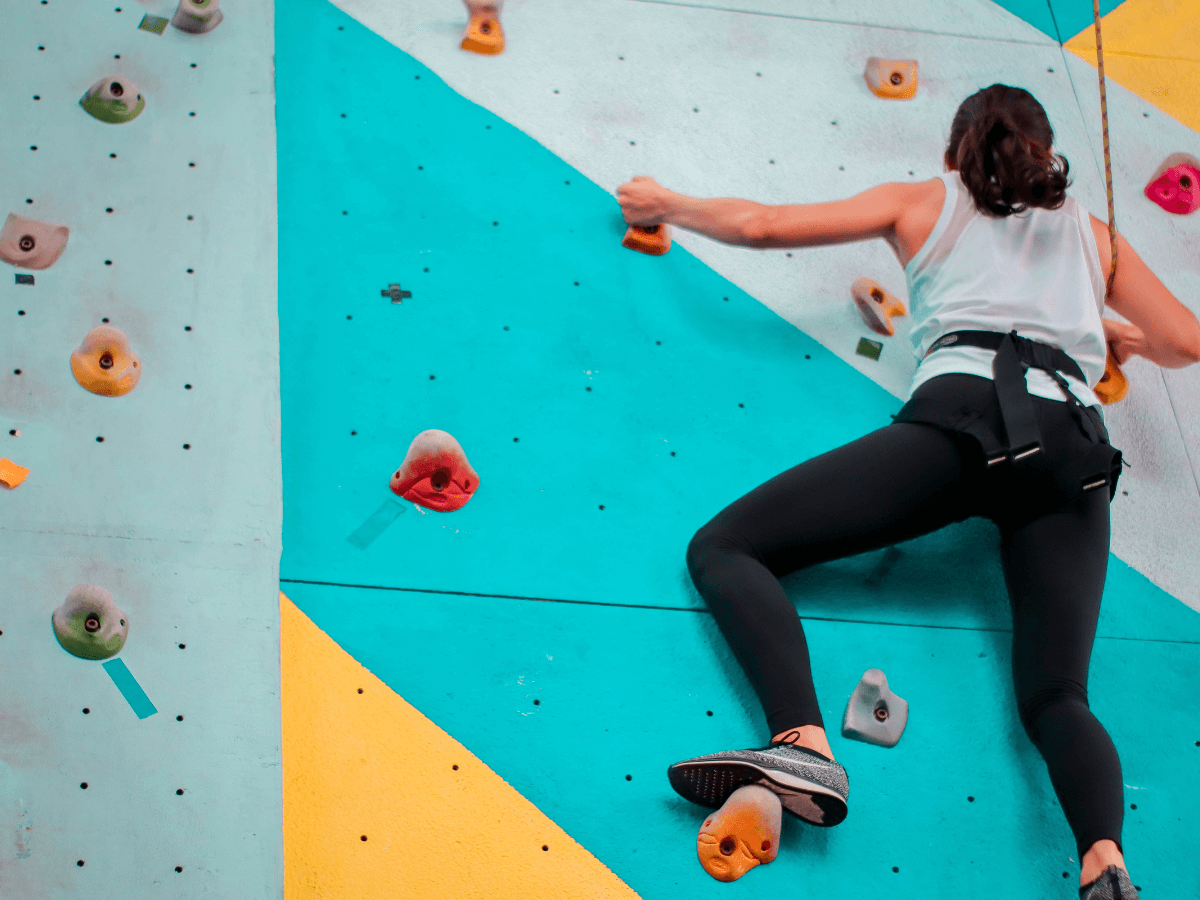5 Advanced Climbing Techniques
The beauty of climbing is that there are always more advanced techniques to learn. It’s an art that you can spend your entire lifetime perfecting. But it’s nice to set goals along the way and see progress. The more you perfect your climbing craft, the more advanced climbing opens up to you. In short, you get to climb more, cooler climbs! So, in light of improving your climbing, here are five advanced climbing techniques that will take you from the intermediate, average-joe zone to an absolute crusher on the wall.
5 Advanced Climbing Techniques
1. Resting on the Wall
Learning to rest on the wall is critical as you advance into your climbing career. While anyone can rest on the wall, an advanced climber rests efficiently, wasting minimal energy, de-pumping, and recentering their focus on the climb.
While this is mainly crucial for sport climbers, it can pay off on competition style or more prolonged boulder problems (such as outdoor projects) where you may need to breathe and rechalk mid-climb.
The basics of an efficient rest position include:
● Shifting as much weight out of your arms and into your legs as possible.
● Straightening your arms to rely on your skeletal structure rather than your muscles to hold you up.
● Remaining calm and refocusing your mind.
● Big, deep breaths to lower your heart rate
2. Pogos
Climbers teetering on the edge of the advanced climbing scene should focus on becoming comfortable with dynamic movements and dynos. One niche but useful dynamic movement to master is the pogo.
A pogo is where you build momentum by swinging one leg back and forth, and then, when ready to commit to the move, you land the swinging foot on a hold and use the momentum to spring out or up to the next hold. It would be best if you saw this movement to understand, so use the interwebs and start practicing.
3. Quick Route-Reading and Problem-Solving
Despite not always wanting to, an advanced climber knows the importance of route-reading. They pay attention to different climbing styles and movements they see and perform so that when it is time to read a new route, they have a catalog of information to pull from.
You likely already have a small catalog hidden in your subconscious, so make an effort to actively observe and analyze other climbers and setting styles to ensure you can decipher the moves on a new climb quickly.
Additionally, practice remaining calm on the wall if the intended beta doesn’t work or you get stumped. It is easy to panic and overgrip or give up if you perceive yourself as stuck. Instead, when you are in a “stuck” situation, keep calm and see if you can downclimb to a good hold and reset, rest where you are on the wall, and make a new plan, or commit to continuing with the unintended beta sequence. The worst thing you can do for yourself as a climber is to try nothing and let go or pump out. Go down fighting!
4. Lock-offs
Lock-offs are a valuable strength skill that provides more control over big reaches. If your lock-off, especially one-arm lock-off strength, is good, you don’t have to jump or use the momentum to close a big gap between holds. Instead, you can pull up high, lock off, and reach with the free hand, saving you the energy that you would’ve expended, having to stop your momentum from making the move dynamically.
You can train these on a bar with assistance (i.e., hold onto a band with your not-in-use arm) or complete them on a climb by forcing yourself to lock off on every move for 3-5 seconds before grabbing the next hand.
5. Deadpoints
Combine a solid deadpoint ability with good lock-off strength, and you’ll sail up the challenging climbs. Deadpoints maximize your ability to reach the end of the apex with power and accuracy. Practicing deadpoints will make big moves to small holds easier and increase the chance of sticking to the next climbing hold rather than jumping and cutting feet.
It may be hard to find climbs with intended deadpoint movements in the gym, so make them up! Pick holds far enough apart that you must move with power, make the target hand-hold small to force precise execution of body movement, and ensure that when you move, your other limbs keep contact with the climbing wall.
These five advanced climbing techniques mesh together critical components of the physical, mental, and tactical elements. Improving in each realm will advance your abilities and see you climbing higher grades or sending personal projects. If you have unanswered questions on these climbing techniques or other advanced techniques you’ve heard about, drop them below!

